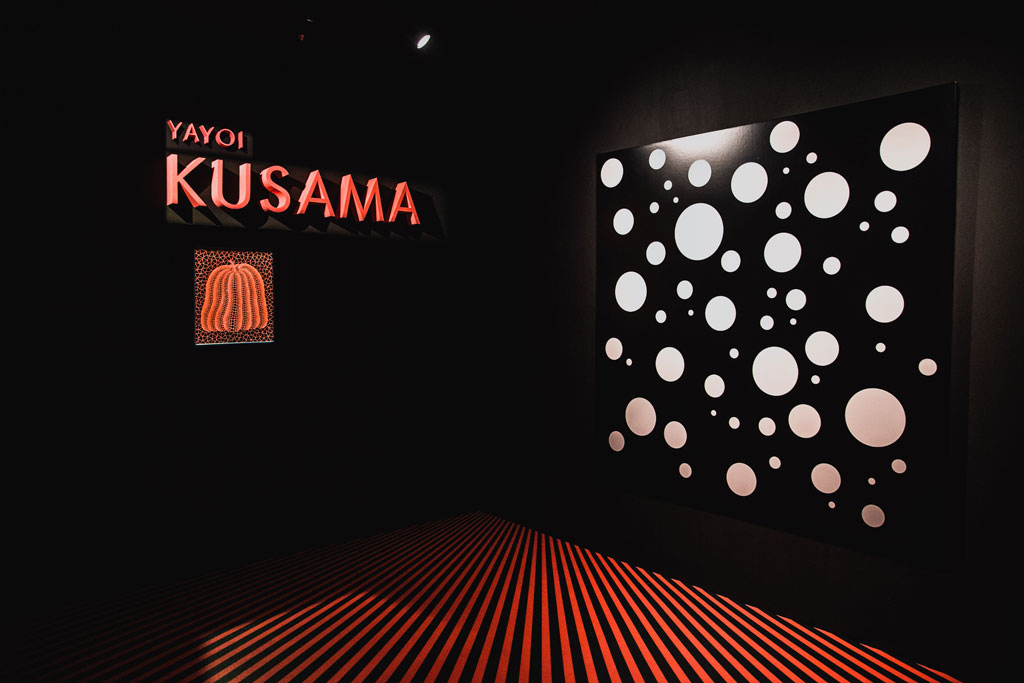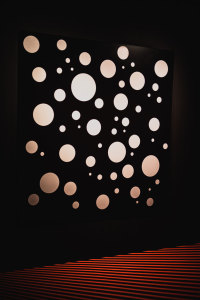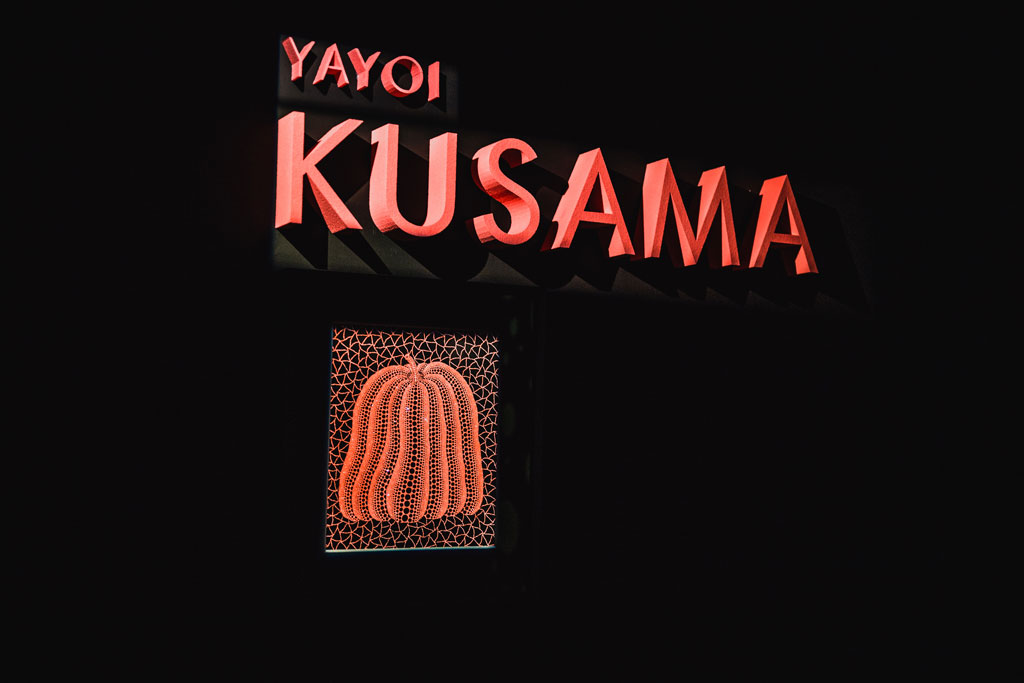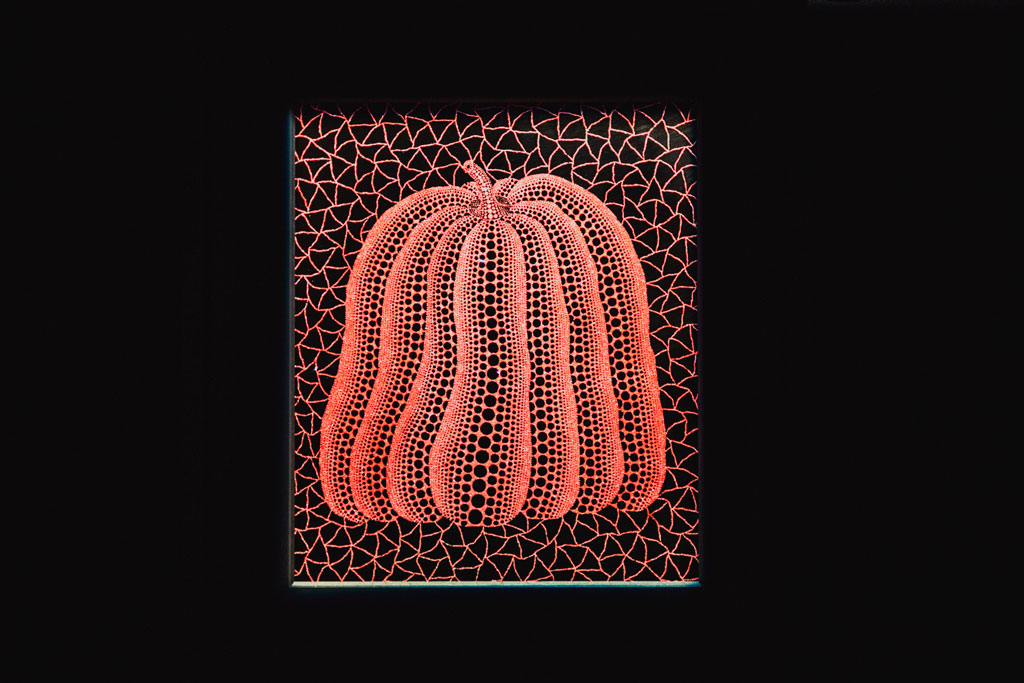ART CITIES:Amsterdam-Yayoi Kusama
 Yayoi Kusama is the most famous artist to emerge from Japan in the period following World War II. Yayoi Kusama has shaped her own narrative of Postwar and Contemporary Art. Minimalism and Pop Art, Abstraction and Conceptualism coincide in her practice, which spans painting, sculpture, performance, room-sized and outdoor installations, the written word, films, fashion, design, and architectural interventions.
Yayoi Kusama is the most famous artist to emerge from Japan in the period following World War II. Yayoi Kusama has shaped her own narrative of Postwar and Contemporary Art. Minimalism and Pop Art, Abstraction and Conceptualism coincide in her practice, which spans painting, sculpture, performance, room-sized and outdoor installations, the written word, films, fashion, design, and architectural interventions.
By Dimitris Lempesis
Photo: Moco Museum Archive

On 22/3/19 Japanese artist Yayoi Kusama celebrated her 90th birthday. Moco Museum in Amsterdam pays tribute to the eccentric and enigmatic Polkadot Princess by showcasing the works “Night of Stars” and “Pumpkin”. The works are shown in a completely transformed space. The fascination of Yayoi Kusama for “Dot Art” is reflected in her iconic style in which large polkadots play the leading role. In addition to her famous drawings, paintings and installations that show her polkadot specialism, Kusama is strongly committed to feminism and to sexism through her work. On the first floor you will find a unique exhibition space dedicated to Yayoi Kusama, one of the world’s most successful contemporary artists. Kusama is best known for her pumpkins and polka-dot paintings. Two artworks in these signature styles are currently on display in a special setting designed by Moco Museum’s own creative team. Kusama was born in 1929 in the rural provincial town of Matsumoto, Japan and from a young age was determined to be a painter. Her early works reveal what was to become an enduring fascination with both natural forms and polka dots, the latter allegedly appearing to her in a vision. However, her family were far from supportive. The expectation was that she would get married and have kids and not just get married but have an arranged marriage. Her mother snatched drawings from her before she was able to finish them, which may explain her obsessive creative drive as she rushes to finish a work before it can be taken from her. Frustrated at her husband’s infidelity Kusama’s mother would force her daughter to spy on him with his lovers. She found the experience so traumatic that she developed a lifelong aversion to sex. Unsurprisingly, Kusama began to think of a means of escaping her stifling home environment. A great admirer of Georgia O’Keefe, in whose fantastical, dreamlike depictions of nature she saw a kindred spirit, she took the extraordinarily bold step of writing to her for advice. “I’m only on the first step of the long difficult life of being a painter. Will you kindly show me the way?” she asked. She must have been ecstatic when O’Keefe wrote back, even if it was to warn her that “In this country an artist has a hard time making a living”, All the same, she advised Kusama to come to the US and show her work to anyone who might be interested. It was not to be that easy, the New York art world was male dominated to the extent that even many of the female dealers didn’t want to exhibit women. Although Kusama won the praise of Donald Judd, a notable artist and critic, in an early review of her work, and even though Frank Stella was an admirer, real success eluded her. A fact made all the more agonising as she was forced to watch her male peers gain recognition for her ideas. Claes Oldenburg was ‘inspired’ by her fabric phallic couch to start creating the soft sculpture for which he would become world famous, while Andy Warhol would copy her innovative idea of creating repeated images of the sole exhibit in her “One Thousand Boats” installation for his Cow Wallpaper. But worse was to come. In 1965 Kusama created the world’s first mirrored-room environment, a precursor to her Infinity Mirror Rooms, at the Castellane Gallery in New York. As man prepared to head for the moon, Kusama had uniquely grasped the public’s growing awareness of infinity. She confronted them with this unnerving concept through a seemingly endless environment. Only a few months later, in a complete change of artistic direction, Avant-Garde artist Lucas Samaras exhibited his own mirrored installation at the far more prestigious Pace Gallery. With the support of friends such as gallery owner Beatrice Webb, she somehow managed to pull herself together and in a remarkable show of determination took herself to the 1966 Venice Biennale, without invitation, to show her Narcissus Garden. A witty take on the commercialisation of the art world, it comprised 1500 mirrored balls that she sold off at a few dollars a time – until officials put a stop to it. Back in the US, Kusama began staging happenings in newsworthy locations such as Central Park and the grounds of MoMA, often with the intention of promoting peace or criticising the art establishment. But the fact that many of these events involved nudity caused scandal back home in Japan and great shame to her conservative family. Even some elements of the US press criticised what they saw as her endless desire for publicity. Increasingly disillusioned and depressed she returned home to Japan where, without the support of family or friends and finding herself unable to paint, she once again attempted suicide. But it seems that Kusama’s desire to create was always greater than her desire to die. Miraculously, she managed to find a hospital where the doctors were interested in art therapy and checked herself in. In this secure environment she found herself able to make art again. Her first works were an uncharacteristically dark series of collages in which she embraced the imagery of natural life cycles, almost as if she was challenging herself to confront her demons. By this point Kusama had been virtually forgotten both at home and abroad but showing her enduring creative drive and determination she began to re-establish herself from scratch, and gradually her work began to be re-evaluated. A retrospective of her work was held at the Center for International Contemporary Arts in New York in 1989, and four years later, the Japanese art historian, Akira Tatehata, managed to persuade the government that she should be the first solo artist to represent Japan at the 1993 Venice Biennale. Although a delicate Kusuma had to be accompanied by a psychotherapist, fearful of a nervous breakdown, the exhibition was a phenomenal success and led to a huge transformation in how she was received and recognised in Japan. Further retrospectives followed while increasing recognition and her supportive environment allowed Kusama to continue to transform her trauma into art. Kusama’s astonishing rise in the intervening years owes much to social media but one hopes that the documentary will encourage people to put down their phones and take time to properly reflect on her work next time they go to see it. Whether viewing pumpkins, polka dots or immersed in one of her awe-inspiring Infinity Rooms, what visitors are looking at is nothing less than the redemptive power of art.
Info: Moco Museum, Moco Museum, Honthorststraat 20 (Museumplein), Amsterdam, Duration: 22/3-30/9/19, Days & Hours: Sun-Thu 9:00-20:00, Fri-Sat 9:00-21:00, https://mocomuseum.com


